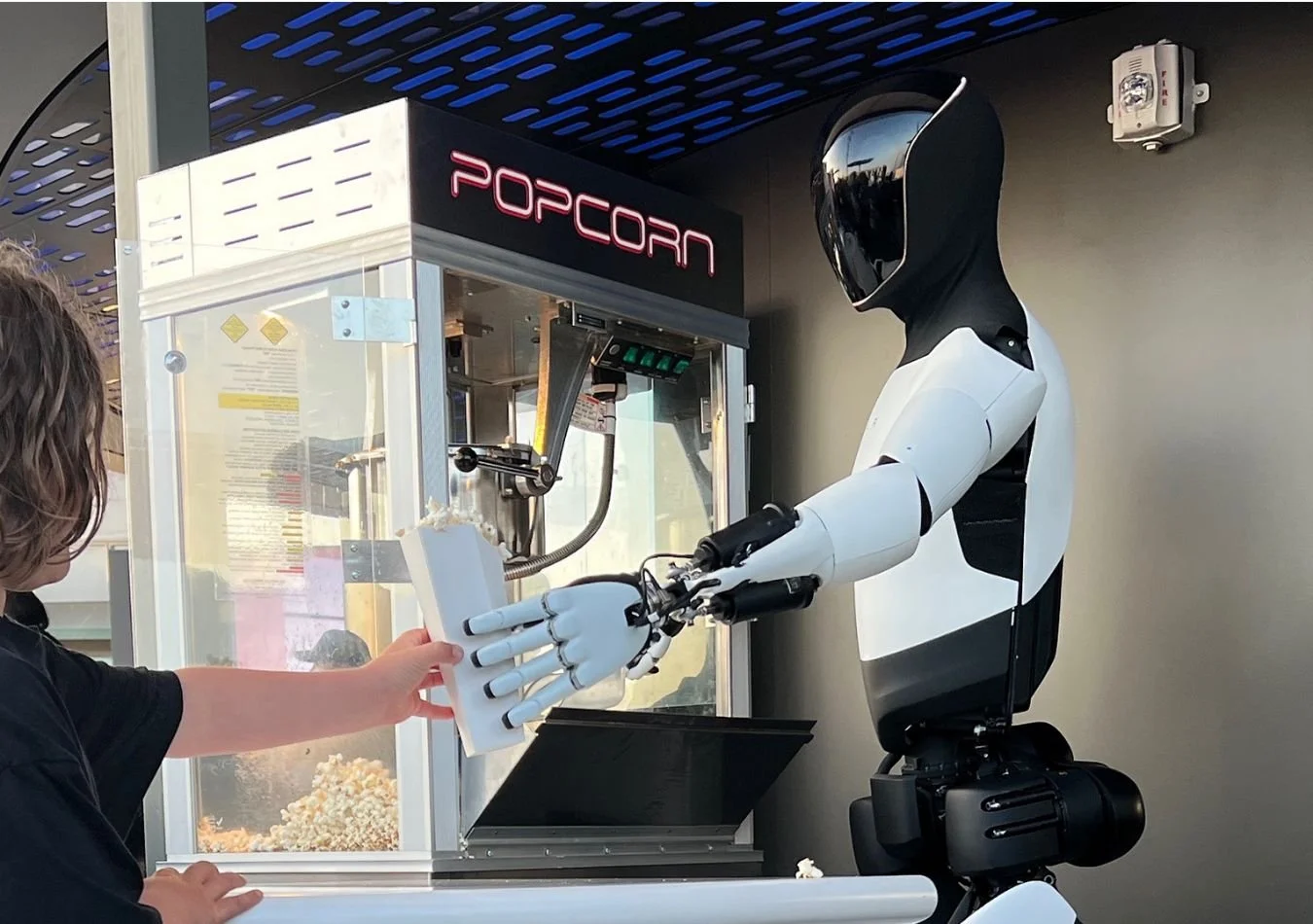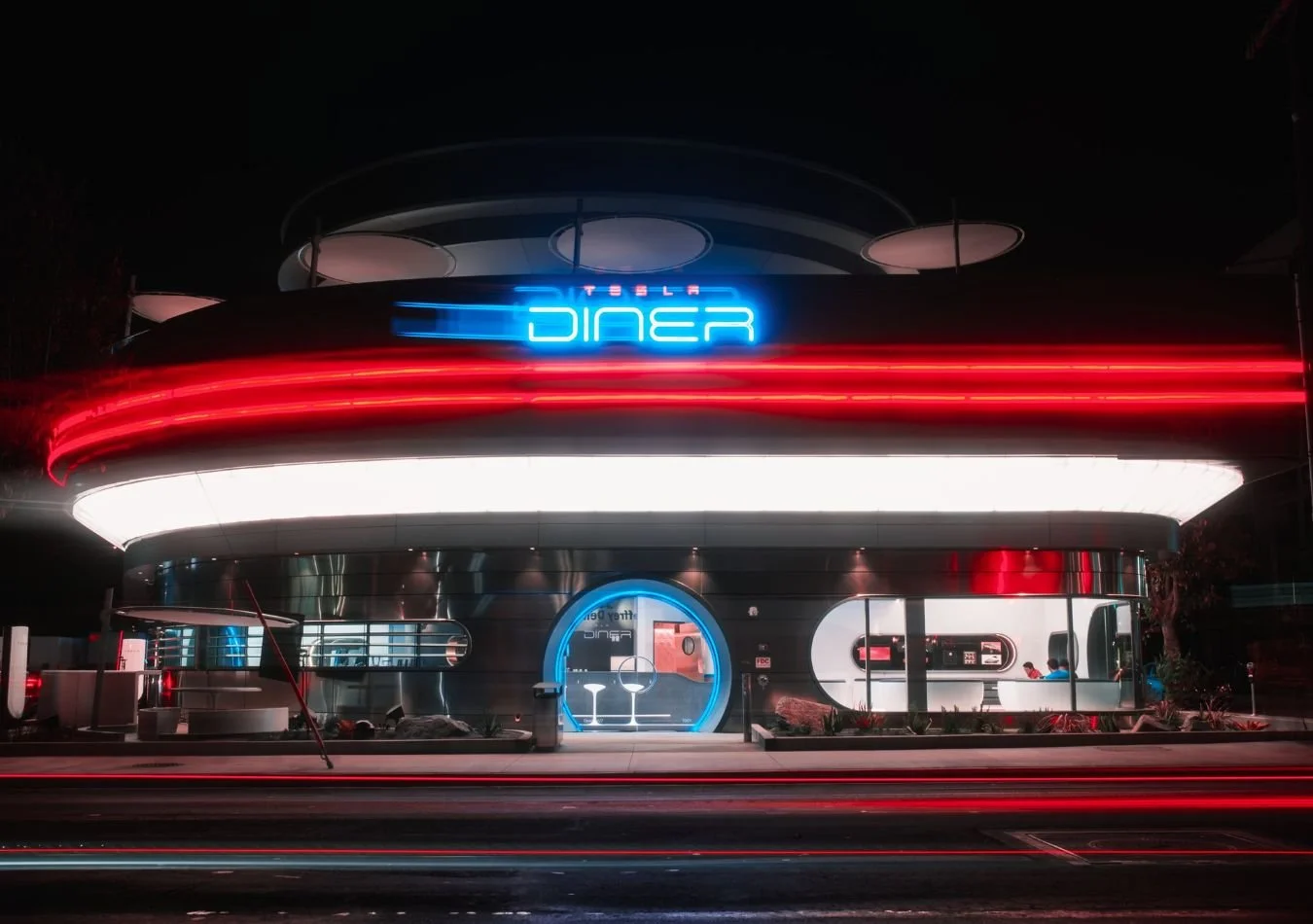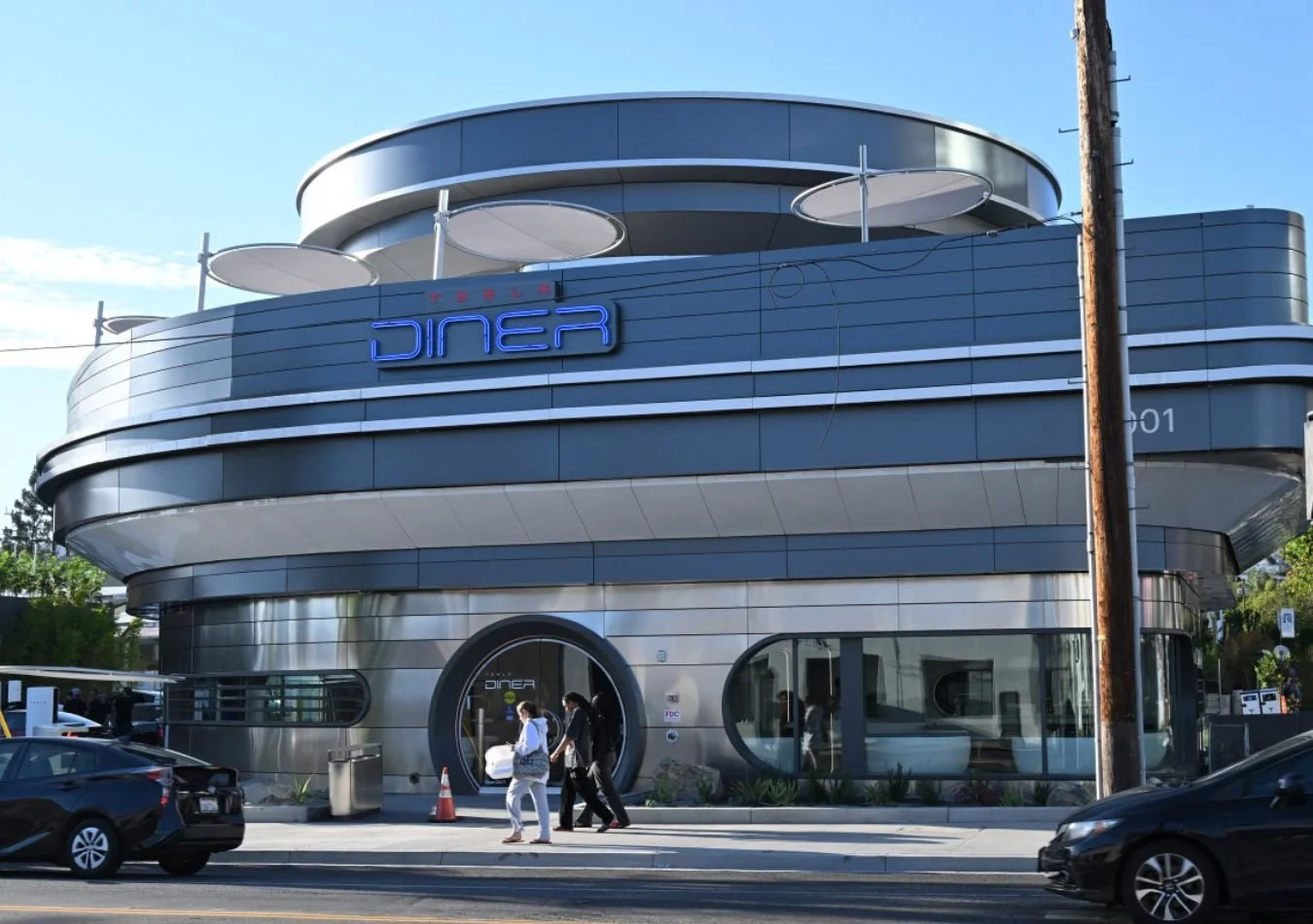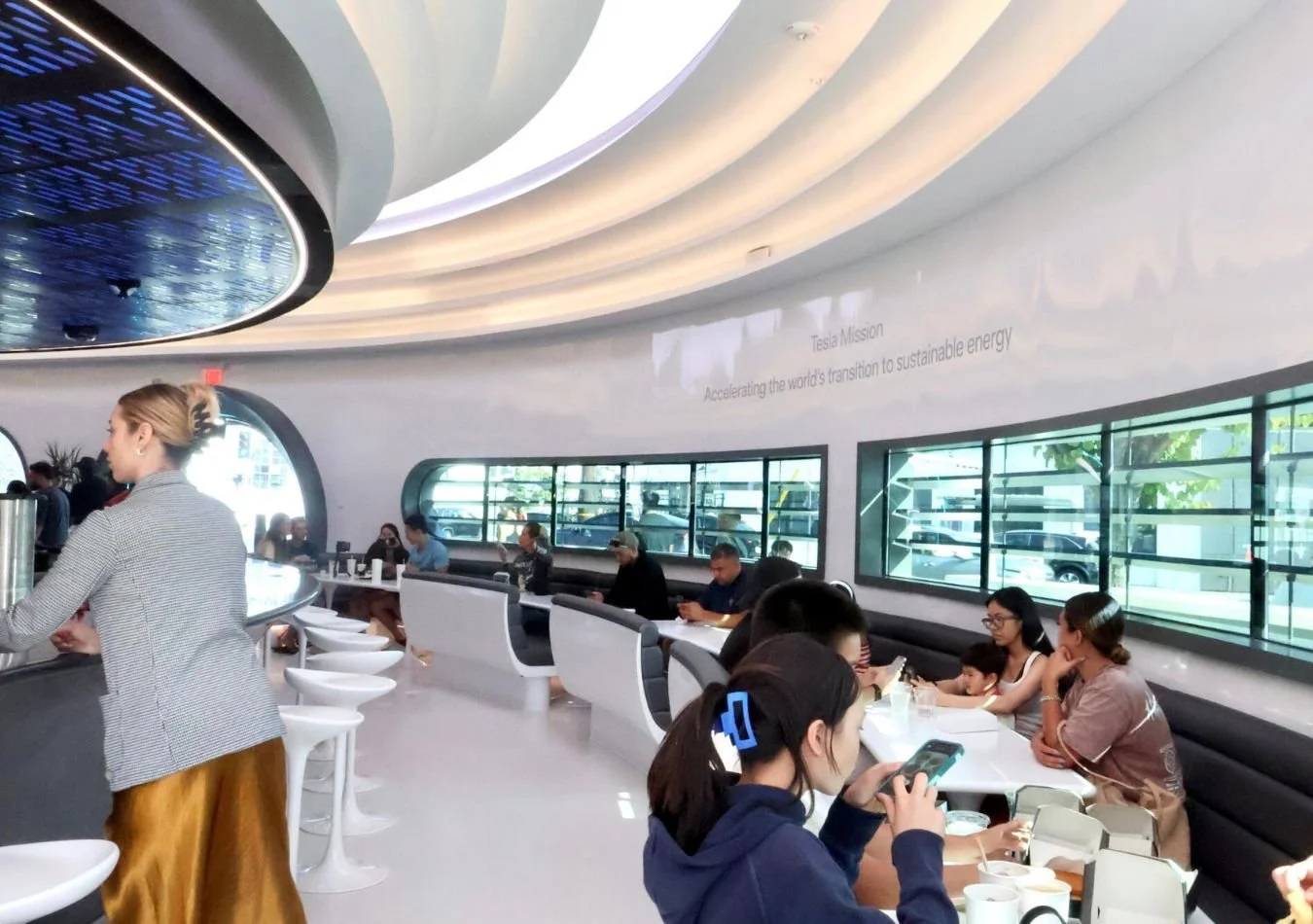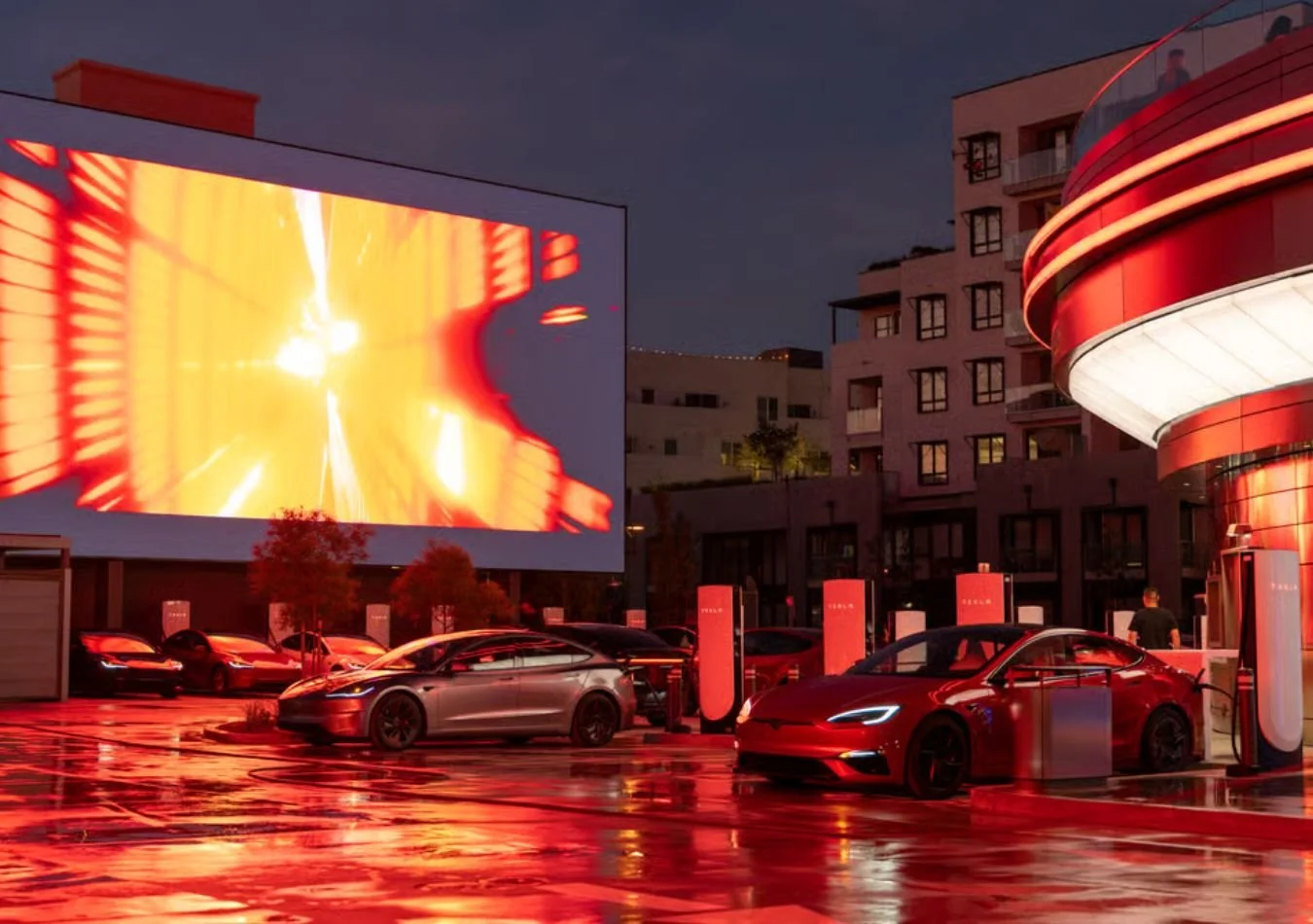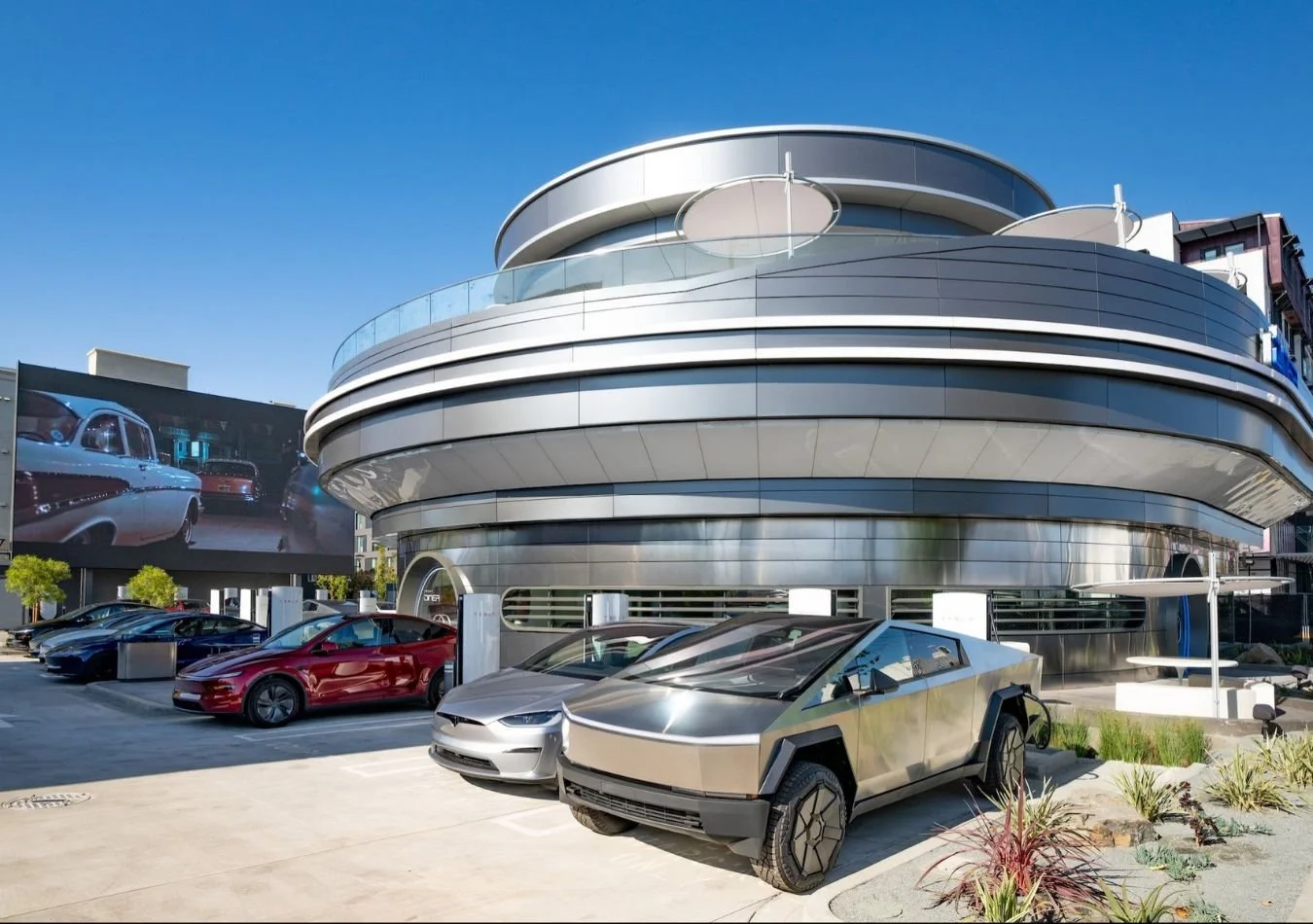In a surprise move even by Elon Musk’s standards, Tesla has opened a 24-hour diner on Santa Monica Boulevard - complete with roller-skating servers, curated movie clips, robot popcorn, and up to 80 Superchargers. Equal parts roadside attraction and brand experiment, the Tesla Diner is a glossy example of content, commerce, and cultural cachet colliding in physical space.
But beneath the chrome and pie shakes is a strategy that should interest more than EV fans. The diner is a vivid demonstration of what it looks like when a brand designs not just products, but environments - spaces built to immerse people in its worldview.
📊 Supporting Stats
According to Eater, the Tesla Diner is a 3,800 sq ft space with a 5,500 sq ft patio, designed by Stantec and developed with hospitality veteran Bill Chait.
The site features up to 80 V4 Supercharger stalls, supporting Tesla’s broader goal of building 1,000+ Supercharger locations in North America by 2025 (Tesla earnings reports).
The US experiential marketing industry is projected to reach $62 billion by 2031, growing at 6.3% CAGR (Allied Market Research).
A 2023 McKinsey report found that companies leading in brand experience outperformed peers by over 200% in shareholder returns.
✅ Pros - What’s Working?
Branded immersion: The diner turns EV charging into a themed brand environment — a place to hang out, not just plug in.
High-volume content engine: With Cybertruck burger boxes and LED-lit milkshakes, the entire setup is designed for organic social sharing.
Vertical integration: Tesla now owns not just the car and energy, but the downtime too - capturing attention during every stage of the customer journey.
Cultural fluency: The blend of retro Americana and sci-fi futurism gives the space a familiar-yet-novel feel, perfect for generating buzz.
❌ Cons - What Are the Limitations?
Privacy concerns: The use of geofencing, Bluetooth syncing, and app-based ordering raises questions around data collection and customer consent.
Scalability: LA offers a perfect launchpad - but translating this high-concept format to less media-saturated markets may prove difficult.
Core distraction: For a company already under scrutiny over delivery numbers and margins, expanding into hospitality could be seen as mission drift.
🚀 Opportunities - What Should Brands Pay Attention To?
Experience as media: The diner functions as an Instagram set, a food outlet, a retail hub, and a Supercharger - showing how environments can become multi-format content.
Physical extensions of digital brands: Even tech-first companies benefit from real-world spaces that reinforce brand values and spark community.
Founder-led storytelling: Musk’s involvement adds cultural gravity - part of a broader trend where the founder becomes the message.
Merchandising as engagement: Tesla is experimenting with selling more than cars - branded candy, T-shirts, and limited-edition items become part of the brand touchpoint.
⚠️ Challenges - What Barriers Exist?
Sustaining hype: The real test will come when the influencers leave - can Tesla make the diner part of everyday EV life?
Over-extension risk: Creating entertainment venues requires operational excellence - something far outside Tesla’s core capabilities.
Brand perception: For some, the diner will reinforce Tesla’s innovation edge. For others, it may read as a distraction from quality or safety concerns in its core product lines.
🧠 Key Takeouts
Tesla’s diner is less about food, more about feeling - reinforcing the brand through atmosphere, aesthetics, and interaction.
Turning infrastructure into entertainment is a powerful model for modern brands.
Experiences drive attention, and attention drives content - when designed intentionally.
Founder presence continues to shape cultural momentum and audience trust.
Strategic real estate can evolve into brand real estate.
